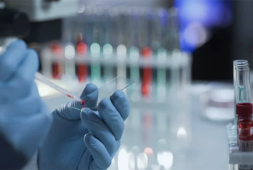
A recent study suggests that consuming water from disposable plastic bottles may introduce hundreds of thousands of potentially harmful tiny plastic particles into our bodies.
Published in the Proceedings of the National Academy of Sciences (PNAS), the research reveals that a liter of water in a plastic bottle contains an average of approximately 240,000 detectable plastic fragments – a significantly higher number compared to previous estimations, which were 10 to 100 times lower.
While the exact impact of micro and nanoplastics on human health remains uncertain, their minuscule size enables them to penetrate the protective tissues of the intestines and lungs, potentially entering the bloodstream and traveling to various organs, including the heart and brain. Moreover, these particles can cross the placenta, posing risks to unborn babies.
Beizhan Yan, PhD, an environmental chemist at Columbia University’s Lamont-Doherty Earth Observatory in Palisades, New York, and his coauthors wrote, “The existence of microplastics [particles measuring 1 micrometer, or 0.001 millimeter, to 5 millimeters in length] and possibly even nanoplastics [less than 1 micrometer] has recently raised health concerns.”
To put this into perspective, a human hair measures about 70 micrometers across.
“In particular, nanoplastics are believed to be more toxic, since their smaller size renders them much more amenable, compared with microplastics, to enter the human body,” he adds.
Although the full extent of their impact on human health remains unclear, micro and nanoplastics possess such a minute size that it allows them to penetrate the protective barriers of the intestines and lungs, gaining direct access to the bloodstream. Once in circulation, these fragments have the potential to migrate to vital organs such as the heart and brain. In addition, they may also cross the placental barrier, reaching the bodies of unborn babies.
They are A Potential Imminent Public Health Threat
As per Tracey J. Woodruff, PhD, MPH, director of the Program on Reproductive Health and the Environment at the University of California in San Francisco, “Microplastics have been increasing in the environment for quite some time and now science is catching up to reveal the impact they are having on our health.”
Dr. Woodruff, who previously examined the adverse effects of microplastics on health for a 2023 California Senate committee report, highlights that although significant clinical human trials are lacking, animal and laboratory studies indicate potential health risks such as increased cancer susceptibility and harm to the digestive, reproductive, and respiratory systems.
Furthermore, research suggests a link between micro and nanoparticles and disruptions in thyroid and endocrine function, as well as conditions like obesity and insulin resistance.
Dr. Yan says, “Concerns about nanoplastics are warranted due to their ability to penetrate biological systems and carry various environmental pollutants. It is important to note that the mere detection of nanoplastics in bottled water does not directly indicate immediate health risks. The impact depends on factors like toxicity, concentration, exposure duration, and the body’s response to these nanoparticles.”
While further investigation is necessary to fully understand the health implications of these tiny plastic fragments, Dr. Woodruff suggests that opting for tap water or water in glass bottles may be a safer alternative to reduce exposure.
Tiniest Particles Identified by New Microscopic Technique
In their research, Dr. Yan and his team selected three well-known brands of bottle water available in the United States, although they opted not to disclose the specific names. Using an innovative approach that utilized two simultaneous lasers tuned to make specific molecules resonate, the scientists identified between 110,000 to 370,000 plastic particles per liter in the samples. A striking finding was that approximately 90 percent of these particles were identified as nanoparticles, with the remainder classified as microplastics.
“When we’re looking at environmental chemical exposures, early methods tend to underestimate amounts, so I’m not surprised that this more sensitive measure was able to identify more particles, especially since there is such widespread use of plastics in water bottles,” says Dr. Woodruff, who was not involved in the study.
In the analysis, polyethylene terephthalate (PET), a commonly used plastic, was identified as one of the prevalent types. This discovery was unsurprising given PET’s widespread application in manufacturing water bottles, as well as containers for beverages like sodas, sports drinks, and condiments such as ketchup and mayonnaise.
However, Dr. Yan and his team were taken aback to find that PET was surpassed by other plastic particles, notably polyamide, a form of nylon. Interestingly, Dr. Yan pointed out that these nylon particles likely originated from the plastic filters, which ironically, were supposedly used to enhance water purity before bottling.
“We had the impression that the majority of plastic particles inside bottled water would be PET particles of a few hundred nanometers in size. This was incorrect. PET particles were found to be mostly in micron size, contributing only a limited portion of the particle population. There are many smaller particles other than PET that have greater particle numbers,” Dr. Yan explains.
During follow-up research, Dr. Yan and his colleagues plan to investigate tap water, which has also been known to contain microplastics, just in lower quantities compared to bottled water. However, Dr. Yan cautions that although tap water may have fewer microplastics from bottles, it may still contain higher levels of other pollutants such as heavy metals and black carbon, emphasizing the need for continued examination and potential regulation.
“This study illuminates the previously underestimated presence of nanoplastics in the water we consume. Further research is essential to determine the extent of human exposure and to evaluate the environmental and health consequences of these nanoplastics,” says Dr. Yan.



